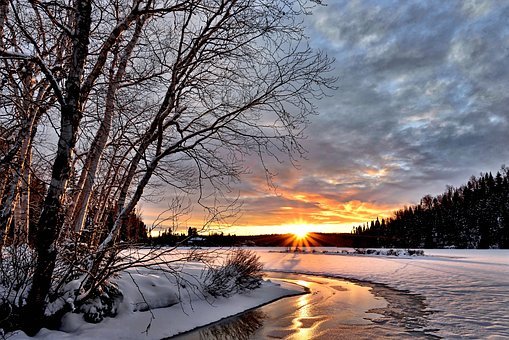Written by Blaky and published on https://www.residencestyle.com/
Identifying a dormant tree is not nearly as complicated as it might seem at first glance. Winter tree identification will demand some dedication to applying the necessary practice to improve the skill of identifying trees without leaves. But if you follow my instructions and use your powers of observation you will find a pleasurable and beneficial way to enhance your skills as a naturalist—even in the dead of winter. Learning to identify a tree without leaves can immediately make your growing season trees easier to name.
All You Need To Know About Winter Trees
When I think of winter trees I think of evergreen trees. These trees grow and stay green all year-long. Traditional evergreen trees, like pine, spruce, cypress, juniper, and arborvitae tend to be cold hardy, adaptable, and low maintenance. They are easy to grow and easy to care for. They are beautiful trees to add to your landscape.
Best Winter Trees
Black Dragon Cryptomeria
This cryptomeria is a great winter tree to add to an asian-inspired landscape. Its dark foliage and interesting habit look really nice in a snowy winter landscape. The Black Dragon is deer, pest, and disease resistant.
Blue Point Juniper
The Blue Point Juniper is such a pretty tree. It adds great color and texture. This evergreen tree only grows to 12 feet tall and up to 8 feet wide so it can fit in just about any landscape.
Blue Wonder Spruce
This is a miniature version of the blue spruce. It only grows to 6 feet tall and 3 feet wide! It is very cold hardy and can be grown in containers.
Colorado Blue Spruce
This needled conifer is really tough. It stands up to just about any winter climate. The foliage is silver-blue, which adds some nice color contrast to the home landscape.
Cryptomeria Radicans
The attractive winter tree is super easy to maintain. It is fast growing and adaptable. The Cryptomeria Radicans tree has a classic upright pyramidal shade and dark green foliage. It can be used alone or in groups.
Emerald Green Arborvitae
This beautiful evergreen tree adds an upscale look to your landscape. It can be used as an anchor, specimen, or in a privacy screen or hedge. This thuja has vibrant green foliage that is incredibly dense.
Norway Spruce
This large spruce is extremely cold hardy and easy to grow. The Norway Spruce is a conifer that resembles a Christmas tree. Deer avoid this fragrant tree. This winter tree can stand alone in the landscape or can be used as a privacy hedge, sound barrier, or windbreak
Thuja Green Giant
This popular privacy screening tree is extremely fast growing. It is also disease resistant and drought tolerant once it is established. The green foliage is feathery and soft to the touch.
How To Care for Winter Trees
Plant evergreen trees in full sun and well-drained, acidic soil.
Using a fertilizer like Holly-Tone is a great way to boost these winter trees. It helps acidify the soil and provides the appropriate nutrients. Holly-Tone is recommended for use twice a year in early spring and early fall.
Prune Evergreen trees in late winter or early spring for best results.
Winter trees are a great way to add year-round appeal to your landscape. Not only do these evergreen trees look nice all year long, they live for a long time. So they can be enjoyed for generations. They are also easy to grow. Add a winter tree to your landscape today!
Original post here https://www.residencestyle.com/all-you-need-to-know-about-winter-trees/.


